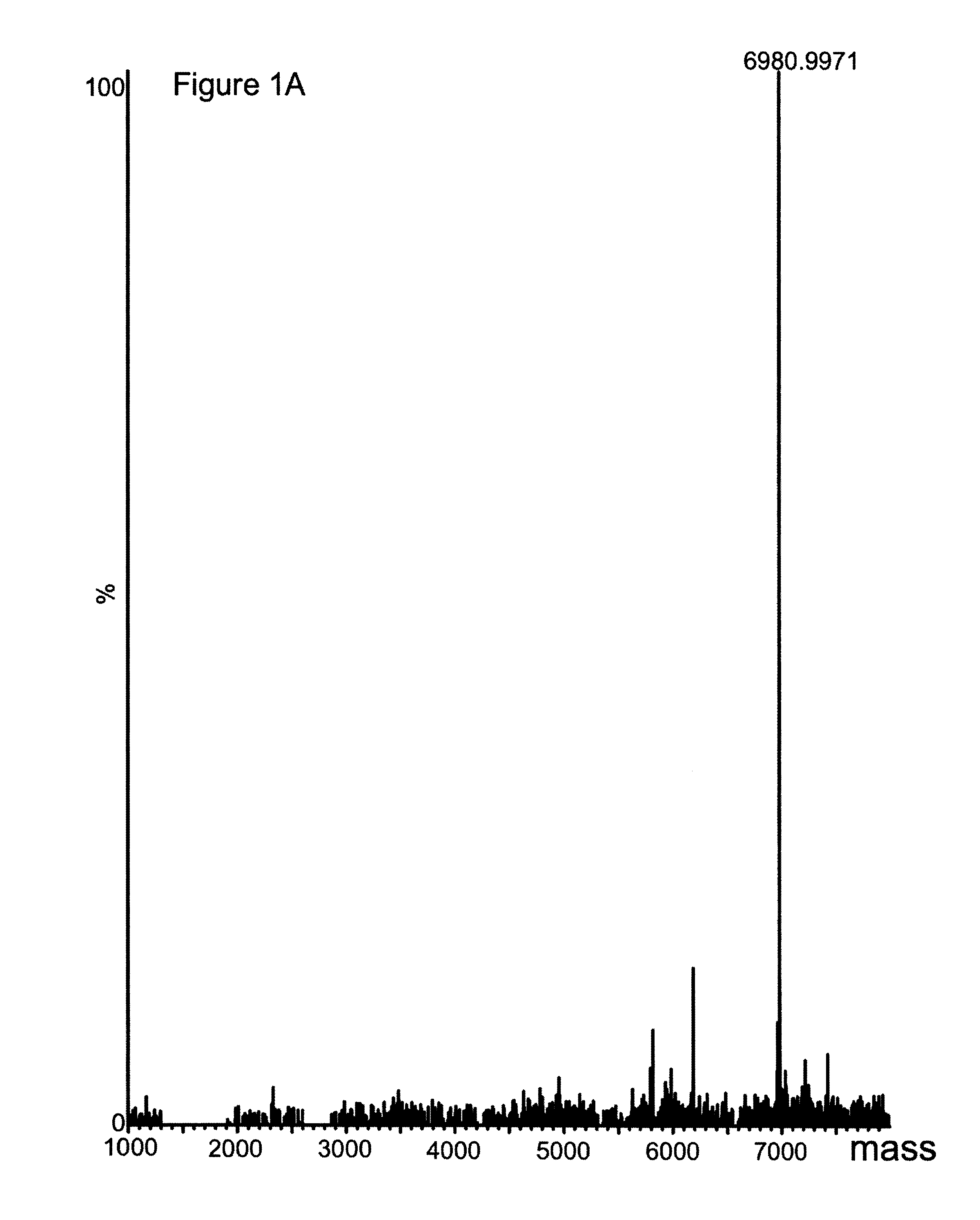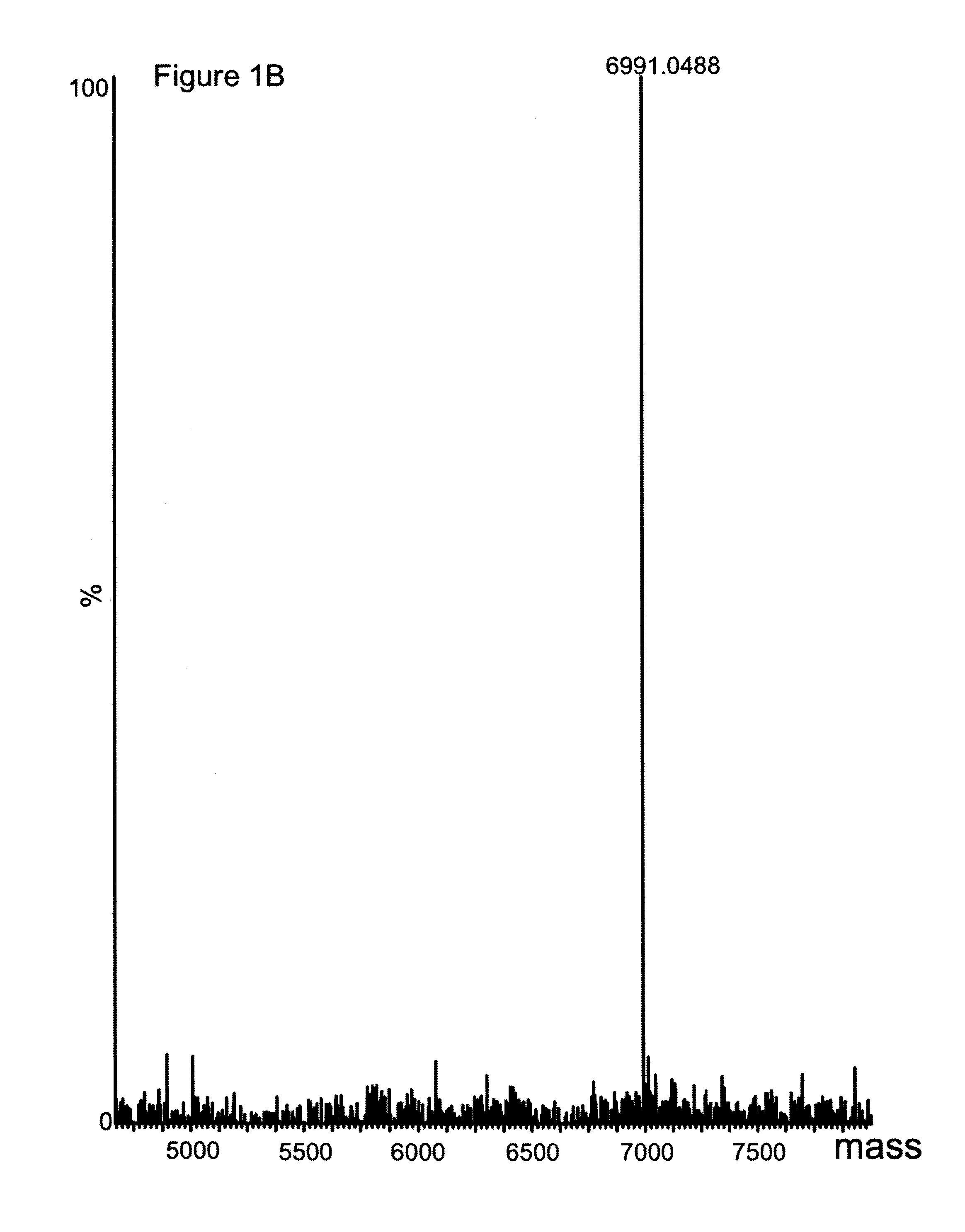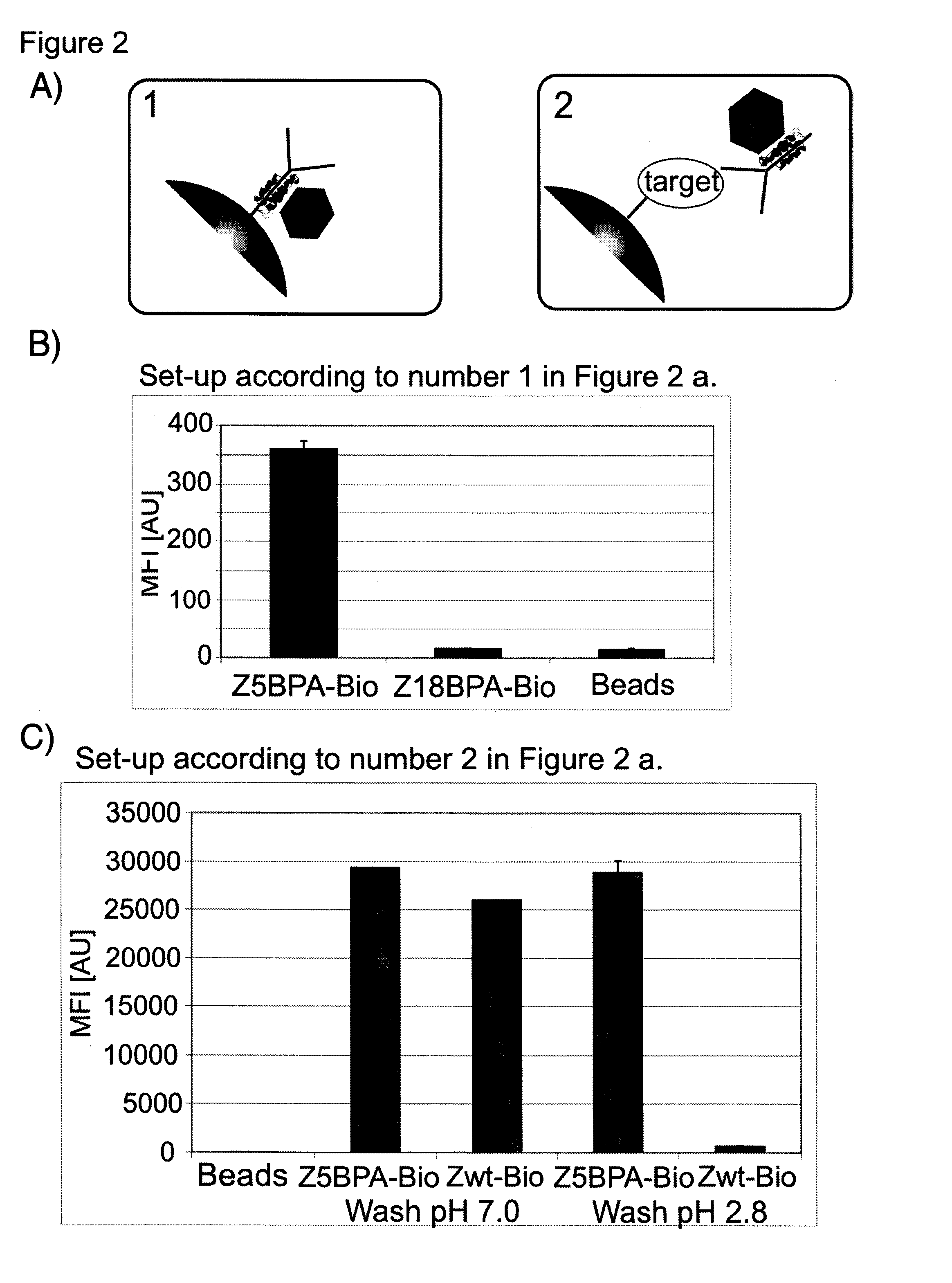Method for labeling of compounds
a compound and labeling technology, applied in the field of compound and compound labeling, can solve the problems of level and location of labeling/coupling, possible compromise of binding site, etc., and achieve the effect of maximizing antigen binding
- Summary
- Abstract
- Description
- Claims
- Application Information
AI Technical Summary
Benefits of technology
Problems solved by technology
Method used
Image
Examples
Embodiment Construction
Material and Methods
General
[0034]Recombinantly produced Zwt, was used as a reference in several experiments (Nilsson, Moks et al. 1987). The protein domain was randomly biotinylated resulting in an average of four biotin moieties / domain, as measured by MALDI-MS (data not shown). Antibodies were from different suppliers;, anti FITC-BSA (human IgG1 and mouse IgG2a, Biolnvent International AB, Lund, Sweden) and anti His6-ABP (polyclonal, Atlas Antibodies AB, Stockholm, Sweden).
Production of Peptides
Materials
[0035]The solvents N,N-dimethylformamide (DMF) and dichloromethane (DCM), and the Fmoc-protected amino acids; Fmoc-Val-OH, Fmoc-Glu(OtBu)-OH, Fmoc-Ala-OH, Fmoc-Phe-OH, Fmoc-Ile-OH, Fmoc-His(Trt), Fmoc-Pro-OH, were obtained from Applied Biosystems (Foster City, Calif., USA). Amino acids; Fmoc-Asn(Trt)-OH, Fmoc-Lys(Boc)-OH, Fmoc-Lys(Mtt)-OH, Fmoc-Gln(Trt)-OH, Fmoc-Leu-OH and Boc-Val-OH were purchased from NovaBiochem (Darmstadt, Germany) and remaining amino acids; Fmoc-Tyr(tBu)-OH, Fm...
PUM
| Property | Measurement | Unit |
|---|---|---|
| molecular weight | aaaaa | aaaaa |
| molecular weight | aaaaa | aaaaa |
| molecular weight | aaaaa | aaaaa |
Abstract
Description
Claims
Application Information
 Login to View More
Login to View More - R&D
- Intellectual Property
- Life Sciences
- Materials
- Tech Scout
- Unparalleled Data Quality
- Higher Quality Content
- 60% Fewer Hallucinations
Browse by: Latest US Patents, China's latest patents, Technical Efficacy Thesaurus, Application Domain, Technology Topic, Popular Technical Reports.
© 2025 PatSnap. All rights reserved.Legal|Privacy policy|Modern Slavery Act Transparency Statement|Sitemap|About US| Contact US: help@patsnap.com



